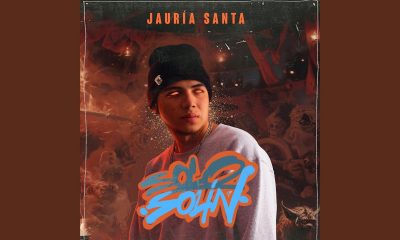
Balenciaga’s Video Game Is the Realest Thing I’ve Seen In Months
To be a fashion designer in 2020 is not simply to make clothes. To be a major player in fashion—a Louis Vuitton or a Dior, but also a Marine Serre or a Collina Strada, or a Grace Wales Bonner, someone small with world domination-level ambition—you have to be a multimedia platform. You have to create films, powerful lookbooks, boxes full of fun crafts, magazines and editorials—or, in the case of the Summer 2021 collection that Balenciaga debuted this past weekend, a video game. The question then becomes whether the clothing is still the point, or just another form of content in your multi-platform brand-distribution journey. For some designers, the answer doesn’t matter; a user sharing a clip of a pop star in your collection video is on par with a consumer buying a logo hat or T-shirt. You don’t have to say too much with your clothes when people are willing to use them to say something else. For a brand like Balenciaga, though, and its creative director Demna Gvasalia, clothing will always be the message. And a video game, it turns out, is a far more immersive way to bring your shopper into your world than by selling them a baseball cap with a logo on it.
In the Balenciaga video game, which any old fashion fan can play at videogame.balenciaga.com, users enter a dystopian Balenciaga store and ascend to environments greener and lovelier, ending with a breathing exercise in a utopia. (Ahhh!) It’s a good story, though a few gamers carped about the game’s limitations—not enough challenges. (Isn’t getting through the day enough without having to, like, get some guy in the Balenciaga video game equivalent of Berghain to let you in to get to the next “level”?) The most impressive thing here is the production value. In the lookbook, presented on the game’s site, each outfit can be toggled around, pushed in circles and up and down, viewed in incredible detail—it looks like the character-selection portion of a video game, but provides the kind of clarity that pandemic-era shows have mostly been lacking. (I have no idea what the back of a bunch of the stuff I’ve written about over the past few months looks like, so buy carefully!) The imagery, environment, and level of detail are jaw-dropping achievement. Balenciaga teased the collection on Instagram with an image of cameras surrounding a handbag, which is likely how they produced these visuals—but also a nice pun about clothing’s starring role in our lives.
The game dovetails nicely with another Gvasalia pillar, which is that Balenciaga sets the industry standard for clothing production. It isn’t necessarily that the brand’s clothing is the softest, or the sturdiest, or the nicest; rather, it all seems to have an immaculate, almost machine-mandated hand and finish. As Gvasalia often reproduces or builds on concepts and staple items, the approach feels like a new way of making fashion, in which the Balenciaga team is constantly improving on the process of making clothes, working towards a level of perfection that could only be expected of God—or a computer. It is the sort of flawlessness that our digital era both demands and allows, and it’s entirely unprecedented, save for couture. (For what it’s worth, Gvasalia told Vogue’s Sarah Mower in an interview about this collection that for his couture debut next summer, “The craftsmanship we can use—it can be with Lesage embroidery or high-tech people from California.”)
While Gvasalia spent first few years of his tenure at Balenciaga advancing the then-provocative idea that sneakers, hoodies, and parkas were a part of the luxury lingua franca if you just put them in the right context, lately he seems to be making that claim through production itself. I’m going to make the nicest hoodie in the world, the finest puffer jacket, the soundest destroyed denim. The “fur” jacket made of shredded deadstock fabric—a reprisal of an idea from the collection shown back in October—looks even better than its first iteration; the NASA jacket, bigger and even more futuristic than the genuine article, feels engineered to be an even more masterful version of itself. Its shoulders are even pitched forward, a house signature—a garment designed to look as if it’s progressing.
At times, it seems like Gvasalia is conducting an experiment about making fashion. His is one of the few fashion companies raising questions instead of answering them. And he’s after a big game: What is progress? What is perfection? What is luxury? What is the point of clothing at all? This collection in particular seemed packed with memos about the literal nature of the past eight months in fashion (though Gvasalia decided on the video game concept early in the spring). Fashion is armor, people keep saying, including Gvasalia himself—so here are metal armor boot-pants, and even a full medieval suit. (These boots are going to be a freaking hit!) Fashion should respond to consumers’ need to relax—so here’s an elegant buffalo-check blanket as outerwear, and a pair of shorts layered over jeans. Fashion is meant to reflect the times—so the hot handbag features a play on the logo for Uber Eats, indeed the most ubiquitous bag in any urban area right now. Fashion should encourage us to buy less, and wear what we have—so a number of the pieces are artfully destroyed, not in the deconstructed Comme des Garcons way so much as by simply being worn to death. Most stunningly, he even tailored suits into a sort of bespoke distress, the backs of the jacket reverently mauled.
For all the mischief, Gvasalia’s message feels ultimately optimistic. This collection was beautiful and wildly impressive—uncomfortable, beguiling, filled with some stuff you might find morally reprehensible. (When I shared photos of that UberEats bag online, the Twitterati rebelled!) When fashion tends to speak in two forms—Loooove that! or Hated it—here’s a brand that basks in the great in-between, that cares little for that over-coddled concept, taste. Even as he builds his brand into something larger, with ambitious projects and extensions, Gvasalia ensures that the fashion remains the message. But more than any other designer working right now, he knows that fashion has to be the medium, too.
Article written by Rachel Tashjian #GQ












